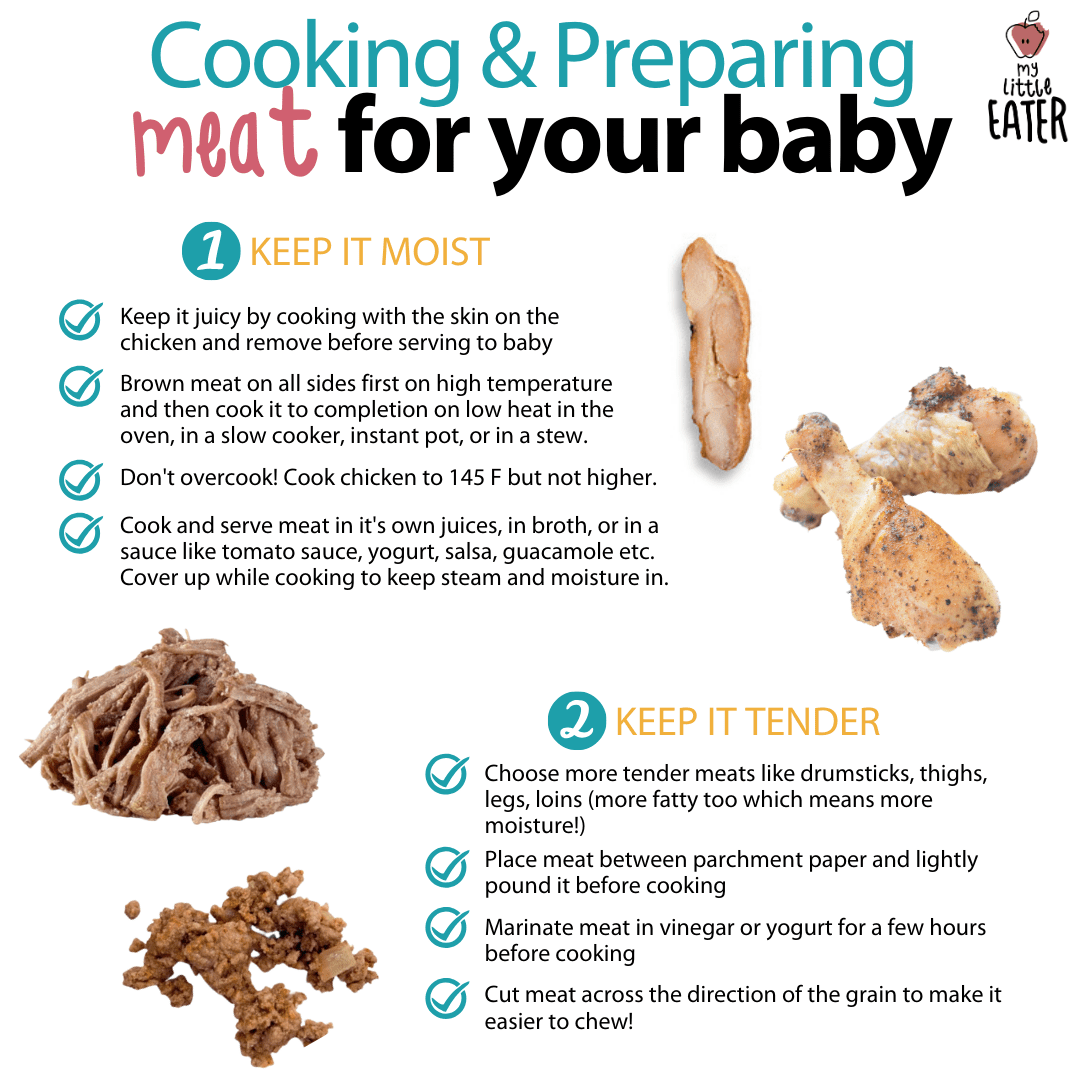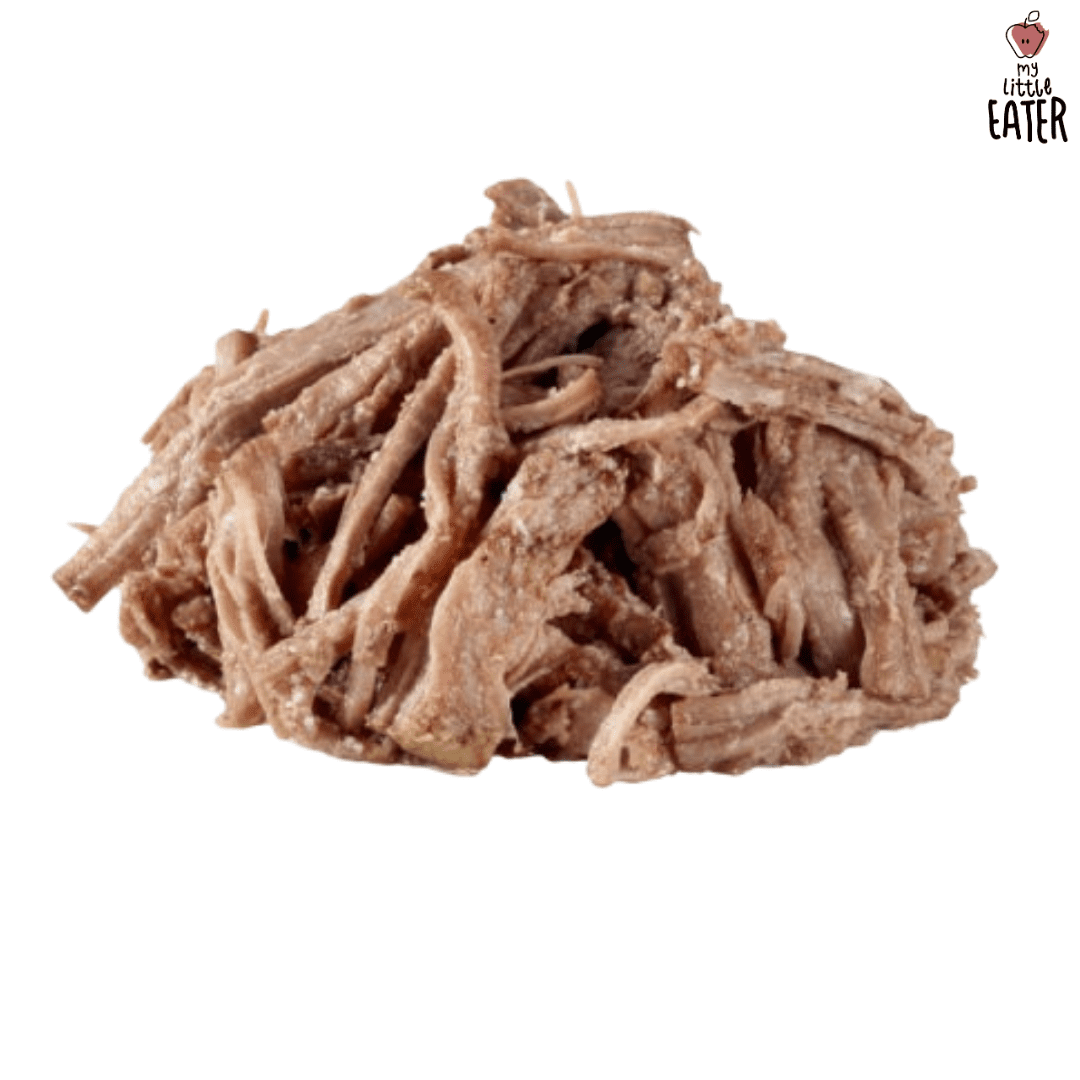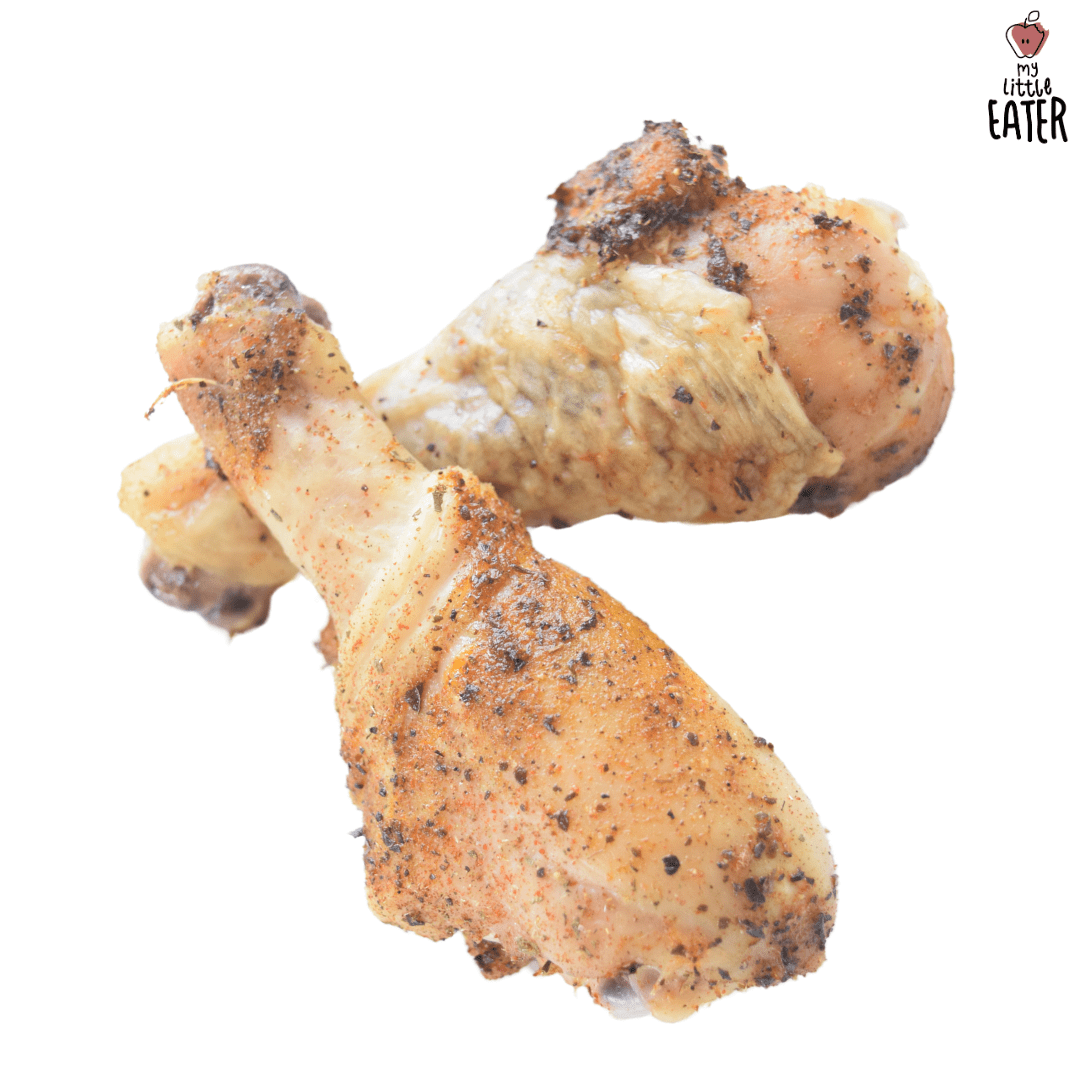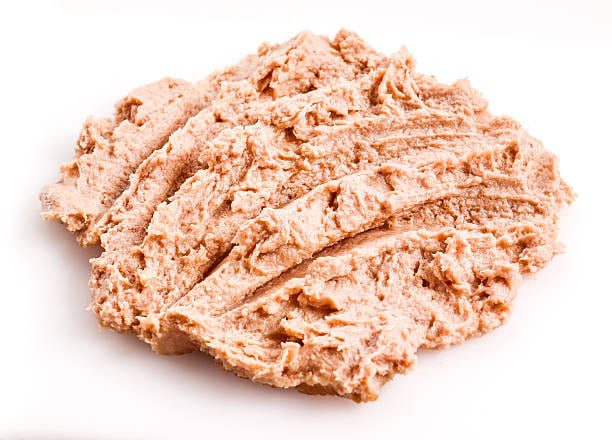When Can a Baby Eat Beef
![Main image for the article [How to Serve Meat to Babies/Toddlers]. Pictured is a toddler eating a piece of meat with a fork.](https://mylittleeater.com/wp-content/uploads/2020/05/New-Blog-Post-Image-Size-3-300x300.png)
Meat (which for the purpose of this blog post includes: beef, lamb, pork, game meat, and poultry) can be offered to babies as early as 6 months of age. In fact, it's one of the first foods recommended to offer babies as indicated by Health Canada and the American Academy of Pediatrics. This is because meat is high in iron, which is very important for babies to be getting right around 6-7 months via food.
The type of iron in meat is heme-iron, which is actually the most easily absorbed in your body, and so, while it's not the only source of iron for your baby, if you're a meat eating family at home, it's definitely one of the easiest and most iron-rich sources you can provide. You can read all about the importance of iron and why we want to offer high iron foods twice a day to babies here. Believe it or not, babies and toddlers do not need meat for protein per say…they can get that easily through other foods like dairy, legumes, and even grains. Rather, it's the iron and B12 that's particularly important to be getting that meat provides so well.
What type of meat can I serve?
Any type of unprocessed meat is a-okay! It doesn't matter if it's organic, grass fed, or conventional meat (although grass fed and organic will have a better fat profile, but not a big deal if you can't afford it). One of the only things to aim for is meat that's not pre-seasoned/marinated, as it's almost guaranteed to contain a high amount of salt. I'd rather see you add seasonings/marinades at home where you can control the amount you put in. Avoid all bacon, ham, hotdogs, and sausages (unless homemade), as it's very high in sodium and nitrites/nitrates, which increases the risk of cancer, and honestly, is so not needed in a baby's diet. Understandably, it can sneak it's way in, especially after one year of age, and hey – nothing will happen to them from a few indulgences. But generally speaking, try and avoid them when you can.
My baby doesn't have any teeth! How will they chew it?
So there are a couple of myths to bust about meat. First off, it's not a choking hazard just because it's not pureed. Babies don't need teeth to chew meat (or other finger foods!) and can chew meat most easily when it meets the following two criteria:

#1: Keep it moist!
Try and maintain as much juice and fat on the meat as possible during cooking. It will not only keep it moist, but the fat is also beneficial for your growing baby. I like to keep skin on drumsticks, breasts, or chicken thighs when cooking them so that the fat from the skin keeps the meat moist. I would then remove the skin before serving it to your baby. When possible, brown any meat on all sides first on high temperature in a cast iron pan, or grill, and then cook it to completion on low heat, whether that be in the oven, in a slow cooker, or braised/stewed over the stove. This will break down the collagen in the meat and tenderize it.
You definitely need to make sure that meat is cooked through, especially for babies, but keep in mind this doesn't mean cooking it so much that it becomes dry and hard. Aim to cook chicken and pork to 145 F (use a meat thermometer) and have a holding time of 8.5 minutes before cutting into it which will ensure any bacteria is killed off. Higher than that, such as 165 F, will be okay for pieces of meat with more fat content that can withstand those temperatures, such as chicken thighs or drumsticks. However, it will likely produce tougher, drier meat for those pieces with less fat content, such as chicken breasts. Steak can be cooked a little bit under this (it's okay to have a touch of pink inside if the steak hasn't been poked with a fork and the outside is well cooked).
Other ways to make meat more moist and easy to chew for your baby/toddler is to add sauces like tomato sauce, plain yogurt (we use that as a sour cream replacement all the time), salsa, pesto, and guacamole to keep it moist. You can use it as something to dip into, or mix the meat right into it. Topping the meat with the broth or juices it was cooked in is what we always do as well (for adults and kids!)…it is just so much more enjoyable when it's moist!
#2: Keep it tender!
You want to make sure that the meat can be easily mashed between your thumb and forefinger (see video below).
via GIPHY
A big part of keeping meat tender is not overcooking it, but you can also choose more tender pieces like a loin (pork or beef). You can further tenderize any piece of meat, including chicken, by putting it between two sheets of plastic wrap, or parchment paper, and pounding it while it's still raw. Other tenderizing techniques include marinating it in things like vinegar or yogurt, but ultimately choosing more tender pieces of meat and chicken (like drumsticks, thighs, and legs…which are all higher in iron by the way!) are going to be the easiest way to make this happen.
Another tip is in how you cut the meat before serving it to your baby. Some may say this is taking it too far, but I find it helps them when you cut perpendicular (or across) the direction of the grain (where the muscle tissues run). That way, you get lots of shorter pieces of meat fibers that will make it easier for it to fall apart in their mouth, making it easier to chew.
Ways to serve meat
If you're puree feeding, you can easily puree cooked meat with a little broth, water, or breastmilk, either on it's own or mixed in with vegetables like sweet potato, carrots, tomatoes, etc. Feel free to add any seasonings and switch up the flavours for lots of taste exposure!
As a finger food, you'll want to form it/cut it in finger length sizes so it's easy for your baby to hold, and generally speaking, at least 1-2" wide. Here are lots of options for how to serve various types of cooked meat, plus meal ideas:
Ground meat in sauce:
The very easiest place to start with babies is by offering ground meat. It's crumbly and soft and moist, especially if you choose one with higher fat content. You can just take any ground beef, turkey, or chicken, and offer it either in it's own juices (keep some of that fatty juice to keep it moist) or in a sauce like tomato/pasta sauce. Your baby can eat it with their fingers or with a spoon.
Ground meat in a patty/finger shape:
I find what's easiest with ground meat is to actually form it into a patty and cut it into finger shapes, or even a large meatball. I also LOVE mini-meatloaves for babies and toddlers (bake meatloaf in a muffin tin) for easy to hold and moist meat. A great trick to keep it extra moist is to add in some coconut milk or regular milk to your meatball recipe!! It's makes it mushy even after it's cooked (think IKEA Swedish meatball texture). If you are adding any sort of breadcrumb to the meatball, soak your breadcrumbs in milk first before using them (called a panade), or just add in small amounts of milk to your meat mixture on it's own! Works wonders I tell ya.
Pulled meat in a slow cooker/pressure cooker:

You'll love how this turns out, and is perfect for babies especially as it just falls apart, is easy to chew, and remains really moist. You can pile up shredded slow cooked meat on the high chair tray to make it easy for your baby to grab onto it with their finger. Of course, you can also mix it into a sauce, or puree textured food, like mashed avocado, salsa, or yogurt.
Braised meat:
If you want super flavourful tender meat, this is a great way to go, especially if you have more time on your hands to dedicate to this. Here's a great link to show you how to do so.
Meat in a stew/soup:
You can make any soup or stew and just strain the meat, veggies, grains etc. from the broth and serve the soft pieces of meat to your baby! It'll be soft from the long cooking time and moist from the broth it's been sitting in.
Meat on a bone:

People always freak out when they hear this one, but it's a great option because meat on a bone (like a drumstick, or lambchop) has an integrated handle that your baby or toddler can hold onto and takes bites out of! Keep in mind..it's large bones we're talking about that they can't bite off or break into pieces. Not small ones that can break and choke them. We bake chicken drumsticks often with a few types of roasted veggies all on one pan, so it's cool to know that babies can just eat it the exact same way you do! As long as you know how to safely serve it (which I show you how to do in my Baby Led Feeding online course) you'll find this to be a low hassle way of offering meat!
Grilled meat:
Grilling meat is trickier to keep moist and tender, but can definitely be done. Grill chicken breast in a covered state like covered with a silicone mat , a lid on your pan, or with an aluminum foil tent over it. This will keep all the steam and moisture on the meat versus evaporating into the air and don't overcook it. Offer a dip again to keep it moist and easier to chew.
Pan fried meat:
Pan frying meat (like steak!) can work as a great food for your baby to gnaw and chew on, in larger pieces, when they don't have teeth. If you ever have a tougher meat for dinner, like steak, this is great for them to just suck on and gnaw on. Believe it or not, by sucking the juices out of it, and gnawing on it, they can actually extract a decent amount of iron from it, so it's a great nutritious option even if they don't ingest much (or any). If they have teeth and can chew better (around 12 months +), you can cut more tender pieces of steak into small 1-2" inch pieces for easier chewing and reducing the risk of choking.
Baked:
Baking is easy and can work if you douse the meat in lots of fat (again, I like to keep the skin on my chicken to keep the fat drizzling on it while cooking). You can also cover it with foil to keep the juices in and the steam on the meat so it stays nice and juicy!
Pate:

How awesome is pate? I love it for babies and toddlers! It's a nutritional powerhouse, with every pate containing at least some liver, and so it delivers a jam packed amount of iron, b12, zinc, and so on. It's easy to spread on pieces of toast or crackers, and doesn't require any chewing! I will say that because liver is SO nutrient dense, there is a possibility of overdosing on Vitamin A if it's eaten more than once a week. Try not to offer it more than that, but otherwise… a beautiful way to serve meat!
I hope this gives you TONS of ideas on how to serve meat to your babies/toddlers and really helps you see that this is not a food group you need to avoid or be scared of! I've got lots of recipes for not only meat based meals, but all sorts of baby and toddler appropriate recipes in my Baby Led Feeding and Feeding Toddlers online courses. Especially if you're wondering how to serve finger foods to babies, the Baby Led Feeding course walks you through every single type of food and how to serve it (with videos) and really leaves you feeling super confident in knowing what to do. I've even got videos of babies eating everything so you can see how they do it in action 🙂
Source: https://mylittleeater.com/how-to-serve-meat-to-babies-toddlers/
0 Response to "When Can a Baby Eat Beef"
Mag-post ng isang Komento